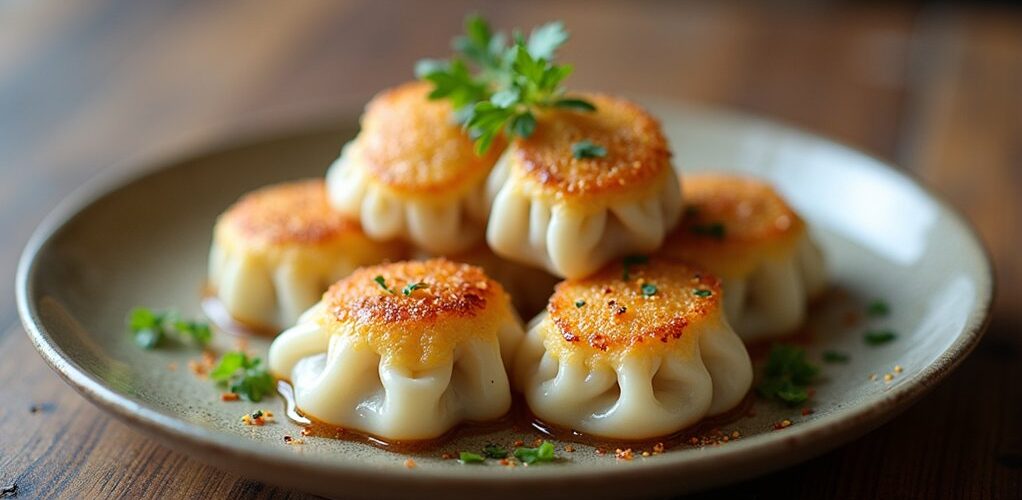
Traditional dumplings are not considered low-carb, containing approximately 12.55g net carbs per 100g serving. Individual dumplings typically contribute 3-4g of carbs each, primarily from wheat-based wrappers. While meat fillings add minimal carbohydrates, the starchy dough markedly impacts the overall carb content. For those following ketogenic or low-carb diets, limiting portions to 5-6 dumplings helps maintain dietary goals. Several alternative ingredients and preparation methods can considerably reduce the carbohydrate impact.
Key Takeaways
- Traditional dumplings are not low-carb, containing approximately 12.55g net carbs per 100g serving from wheat-based dough.
- Individual dumplings contain 3-4g net carbs each, making them unsuitable for strict ketogenic or low-carb diets.
- Meat and vegetable fillings contribute minimal carbohydrates, with most carbs coming from the wheat-based wrapper.
- Low-carb alternatives like almond flour, coconut flour, or cabbage leaves can significantly reduce dumpling carbohydrate content.
- Limiting portions to 5-6 traditional dumplings per meal helps maintain carb restrictions for moderate low-carb diets.
Traditional Dumpling Carb Content Analysis
Delving into the carbohydrate composition of traditional dumplings reveals significant nutritional considerations for health-conscious consumers. A standard 100g serving of traditional dumplings contains approximately 12.55g net carbs, with individual dumplings ranging from 3.14g to 4.39g net carbs based on their weight of 25g to 35g each.
While the meat filling itself contributes minimal carbohydrates, the addition of starchy vegetables and wheat-based dough substantially increases the carb content.
Various cooking methods, particularly pan-frying, can further raise the carbohydrate levels. For individuals following a ketogenic diet or maintaining a low-carb lifestyle, consuming more than 5-6 traditional dumplings could exceed daily carb limits and potentially disrupt ketosis, making them a challenging food choice for carb-restricted diets.
Low-Carb Alternatives for Dumpling Wrappers
For health-conscious individuals seeking to reduce their carbohydrate intake while enjoying dumplings, several innovative wrapper alternatives offer promising solutions. These alternatives provide delicious and satisfying options for low-carb dumplings while maintaining the traditional dining experience through steam or pan-frying methods.
- Almond flour and coconut flour combinations create gluten-free dough recipes that greatly reduce carbohydrate content.
- Natural alternatives like cabbage or lettuce leaves offer fresh, carb-conscious options perfect for meal prepping.
- Cauliflower rice can be transformed into a unique dough alternative to traditional wrappers.
These innovative alternatives incorporate binding agents like psyllium husk powder or xanthan gum to achieve the desired consistency, ensuring that health-conscious diners can continue enjoying their favorite dumpling dishes without compromising their dietary goals. Additionally, using unsweetened almond milk as a dairy-free option can further enhance the low-carb profile of your dumpling recipe.
Optimizing Dumpling Fillings for Keto Diets
While creating keto-friendly dumpling filling requires careful ingredient selection, the process offers numerous opportunities for creative and flavorful combinations. Lean proteins like ground pork serve as an excellent base for low carb dumplings, providing essential protein while maintaining minimal carbohydrate content. To enhance the filling's texture and taste, Nappa cabbage and mushrooms can be incorporated, as these vegetables contribute negligible net carbs while adding bulk and nutrients. Seasoning plays a vital role in creating tender dumplings that satisfy cravings, with ingredients like sesame oil, ginger, and garlic delivering robust flavor without compromising keto diet requirements. Additionally, ground turkey can be used as a protein-rich alternative, offering versatility and zero carbs to suit keto-friendly dumpling recipes.
Impact of Cooking Methods on Carbohydrate Levels
Since different cooking techniques can greatly impact the final composition of dumplings, understanding their effects on carbohydrate content becomes essential for maintaining dietary goals.
While cooking methods like steaming and boiling preserve the original carbohydrate levels in both dough and filling, other techniques may introduce additional factors to take into account.
- Frying dumplings increases caloric content through oil absorption but maintains similar carbohydrate levels as other cooking methods.
- Pan-frying creates a crispy exterior while keeping carbohydrate counts consistent with the original low-carb ingredients.
- Sauce selection considerably influences final carbohydrate content, especially when cooking dumplings in broths or sauces containing sugars or starches.
The choice of cooking method primarily affects texture and moisture content rather than fundamentally altering the carbohydrate levels of the dumpling components.
Smart Portion Control and Meal Planning Strategies
Managing portion sizes strategically becomes essential when incorporating low-carb dumplings into a restricted diet plan, as each dumpling contributes approximately 2g of carbohydrates to daily intake limits. For those following keto diets, limiting consumption to 5-6 dumplings per meal helps maintain carbohydrate restrictions while still enjoying this satisfying dish. Effective meal planning involves preparing keto dumplings in advance using low-carb ingredients like almond flour for the dough and carefully selected fillings. These dough balls can be made in batches and frozen, creating convenient portions for future meals. Smart portion control becomes easier when dumplings are pre-portioned and stored properly, allowing for quick meal assembly without exceeding daily carb allowances. This approach guarantees that these easy-to-make dumplings remain a viable option within a low-carb lifestyle. To ensure you stay in ketosis, consistently adhere to the targeted macronutrient breakdown of fats, proteins, and carbs in your meals.
Frequently Asked Questions
Are Dumplings Low in Carbs?
Traditional dumplings contain significant carbs due to flour-based dough, though fillings can be low-carb. Alternative versions using almond or coconut flour offer reduced carbohydrates while maintaining authentic flavors and textures.
Do Dumplings Have Filling?
Dumplings traditionally contain various fillings, from ground meats to vegetables, seafood, and even sweet ingredients. Different cultural origins influence filling types, cooking methods, and flavor variations, often served with complementary dipping sauces.
How Many Carbs Are in Dumpling Dough?
Traditional dumpling dough contains approximately 12.55g net carbs per 100g serving, while gluten-free alternatives using almond or coconut flour markedly reduce carb content, offering options between 3-4g per individual dumpling.
Do Dumplings Count as Carbs?
Most dumpling varieties count as carbohydrates due to their flour-based dough, though carb content varies with filling options. Low-carb recipes using alternative ingredients can reduce carbohydrate impact while maintaining flavor profiles.
Conclusion
Traditional dumplings are typically high in carbohydrates due to their wheat-based wrappers, but several low-carb alternatives exist for health-conscious diners. By utilizing ingredients like almond flour, coconut flour, or even cabbage leaves as wrappers, and focusing on protein-rich fillings, dumplings can be adapted to fit keto and low-carb dietary needs. Through mindful portion control and strategic preparation methods, these beloved comfort foods can remain part of a balanced, carbohydrate-conscious eating plan.

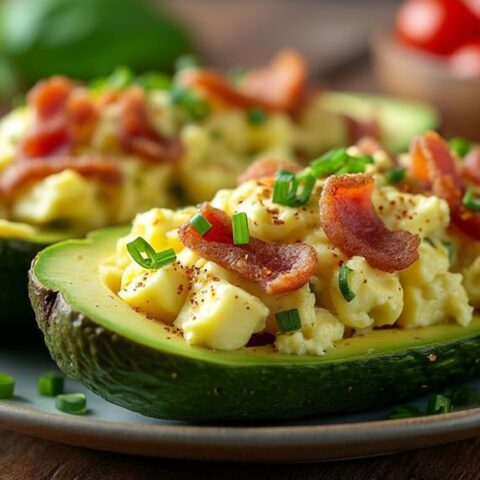
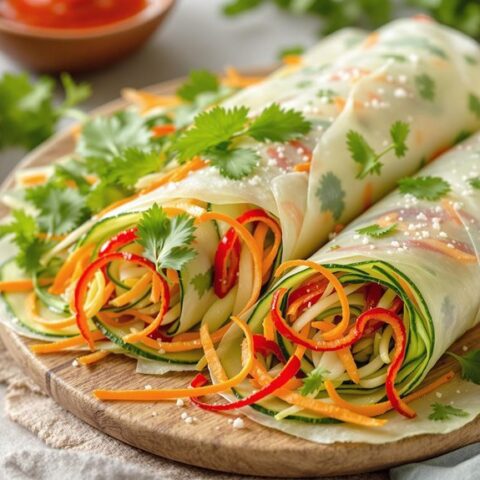

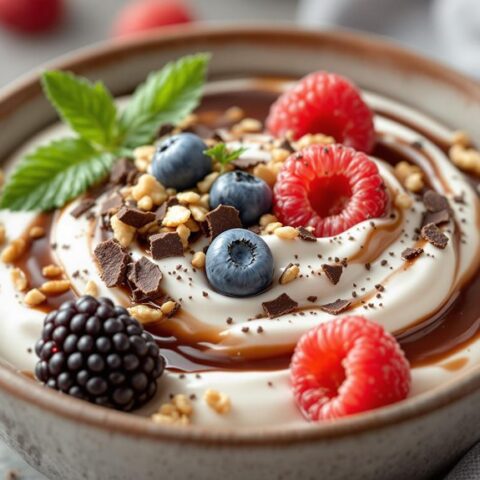
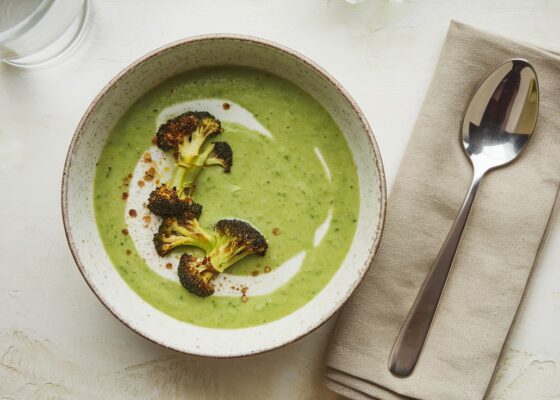

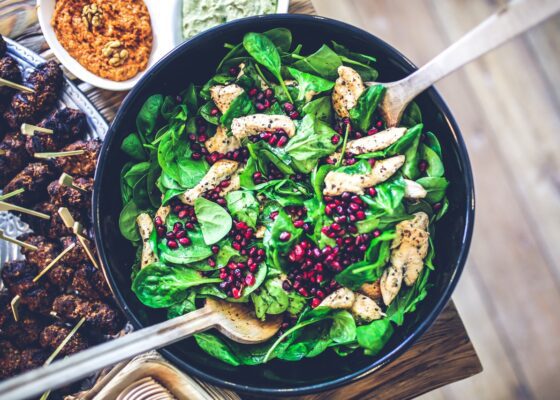
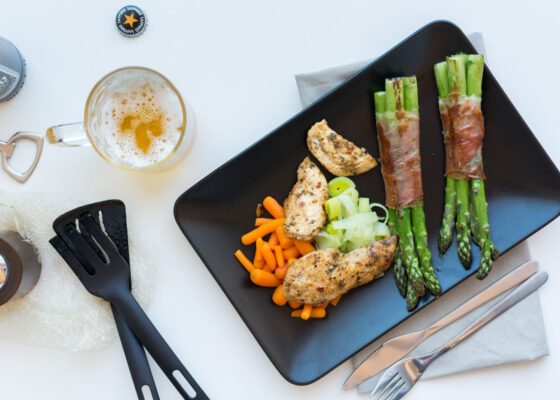
No Comments